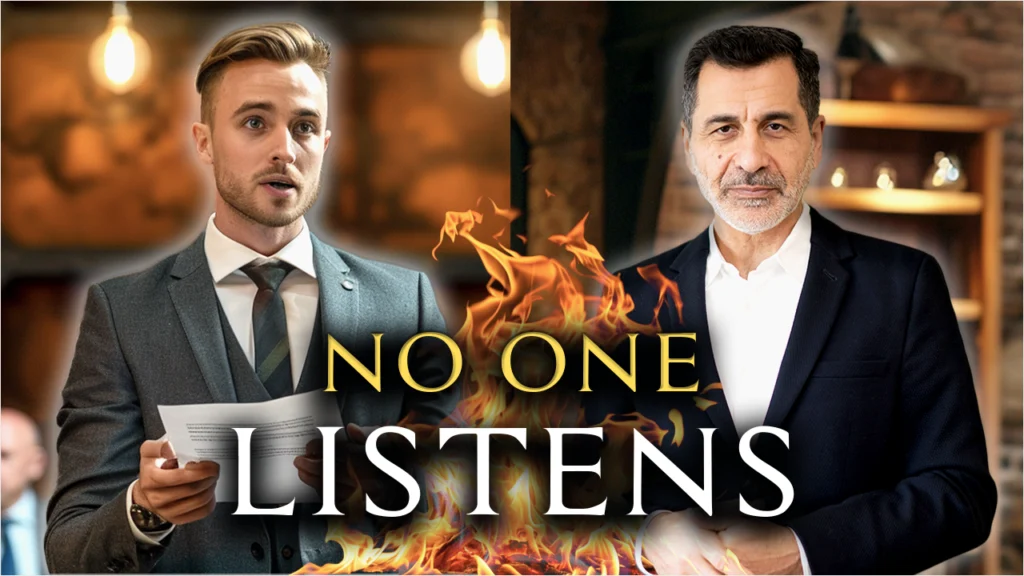Mastering Client Communication: A Guide for Consultants

Research indicates that 96% of unhappy customers will simply leave without complaining, while acquiring a new customer can cost five times more than retaining an existing one.
These statistics underscore a fundamental principle that is especially critical if you are just starting out as a consultant: effective client communication isn’t merely about avoiding pitfalls; it’s about cultivating mutually beneficial communication skills that foster client loyalty, ensure repeat business, and ultimately drive long-term profitability for you and your client.
This article will equip you with the client communication best practices and actionable insights needed to improve client communication. Together, we will learn strategies for establishing open communication channels, proactively addressing concerns, and measuring client satisfaction, ensuring your consulting and services company thrives.
Why Effective Client Communication Matters
Build Trust and Credibility
Key Points to Remember:
- Openness & Honesty: Be upfront about expectations, timelines, and challenges.
- Active Listening: Listen attentively to understand your client’s needs and perspectives, not just their words. Make clients feel heard and understood.
- Inclusion: Involve clients in decision-making to show you value their input.
The Result: When clients feel informed and valued, they trust your skills and expertise.
Ensure Project Success
Key Points to Remember:
- Clear Goals: Define a clear project scope during the sales process, and fully align with the client on goals and deliverables following project kickoff and any additional requirements gathering.
- Regular Updates: Keep clients informed about progress and any roadblocks.
- Seek Feedback: Actively solicit client feedback to ensure shared understanding and satisfaction.
The Result: Good communication ensures everyone is on the same page, preventing surprises and misunderstandings.
Improve Client Retention Rate
Key Points to Remember:
- Show Appreciation: Make clients feel valued and appreciated.
- Maintain Contact: To nurture the relationship, stay in touch even after project ends.
- Proactive Problem-Solving: Address any concerns promptly and professionally.
The Result: Happy clients are more likely to become repeat customers and refer you to others.
Remember: Perfecting your client communication strategy is an ongoing process, not a one-time event. It requires empathy, strategic thinking, and a genuine desire to build meaningful connections. Embrace these principles, and watch your client relationships flourish.
Key Principles of Effective Client Communication
Mastering the art of client communication involves adhering to certain key principles that foster understanding, trust, and collaboration. Let’s explore these principles in detail.
Active Listening
Active listening is like being a detective, carefully observing your client’s every word and gesture to uncover the full picture. Mirror back key points, reflect their emotions, and ask probing questions that encourage them to open up and reveal valuable insights.
Remember, sometimes the most crucial information remains unspoken, and active listening helps you crack the case and understand their true needs. The Outcome? Clients feel genuinely heard and understood, paving the way for a strong, trusting partnership.
Transparency & Honesty
Your project timelines can be likened to a road trip. Just like you wouldn’t embark on a journey without checking for traffic or weather conditions, always try to be upfront about potential detours and delays, so your clients aren’t surprised.
Admitting when you don’t know something is like spotting a pothole on your road trip, it shows humility and builds trust with your clients. When challenges arise, tackle them head-on, this shows your commitment to finding solutions, just like fixing a flat tire to keep your journey moving forward.
Regular Updates
Regular updates act as a reassuring heartbeat throughout your client’s journey, demonstrating that the project is alive and making progress. However, it’s important to strike the right balance. Instead of overwhelming them with every minute detail, focus on showcasing key milestones and providing valuable insights.
Anticipate their questions and address potential concerns proactively, ensuring a smooth and enjoyable journey for your clients. As a result, your client will feel engaged, informed, and confident in the project’s trajectory.
Clear Messaging
When communicating with clients, avoid industry jargon that might leave them feeling lost. Instead, translate complex ideas into everyday language, just as you would explain rocket science to a curious six-year-old.
Utilize visuals like charts and graphs to bring data to life, transforming dry spreadsheets into engaging narratives. And remember, respect your clients’ time by keeping your messages concise and impactful – think of it as crafting a tweet, not a novel. This will help your client to understand the information and make informed decisions.
Remember: Effective client communication is an ongoing process, not a one-time event. It requires empathy, strategic thinking, and a genuine desire to build meaningful connections.
Solution-Oriented Communication
Frame your communication around solutions. Instead of just presenting information, highlight the benefits and outcomes. Example: “This solution is great because it streamlines your workflow (x), leading to increased productivity (y) and cost savings (z).”
The Relevance Principle: Speak to Your Client’s Needs
- Connect to Client’s World: Always link your insights directly to the client’s problems or goals. Don’t just present facts; show how they impact the client’s situation.
- Demonstrate Value: By tying your insights to the client’s specific context, you showcase the relevance and value of your expertise.
- Example: Instead of saying “Mobile usage has increased by 20% in the past year,” say “The 20% surge in mobile usage presents a prime opportunity for your business to reach customers on their preferred devices and enhance their overall experience.”
While mastering these communication principles takes time and practice, the positive impact they can have on your client relationships and overall success is undeniable. However, it’s important to remember that even with the best intentions and communication skills, difficult conversations are an inevitable part of the consulting landscape.
How to Handle Difficult Conversations
Whether it’s addressing a missed deadline, delivering unexpected news, or navigating a disagreement, handling these situations with finesse is crucial. Here’s how:
- Stay calm and professional, even when things get heated.
- Listen closely to the client’s concerns and show empathy.
- Focus on finding solutions together, not placing blame.
- Set clear boundaries while remaining respectful.
Following Up & Getting Feedback
Following up with clients after a project or engagement is a powerful way to nurture the relationship and gather valuable insights. Take these steps:
- Ask for specific feedback on your work and overall satisfaction.
- Listen carefully to both good and bad feedback. Don’t get defensive.
- Thank the client for their input and show your commitment to their success.
- Use feedback to improve your approach and make changes.
Common Challenges and How to Overcome Them
Cultural Differences
When working with clients from different cultural backgrounds, be mindful of potential differences in communication styles, expectations, and decision-making processes.
Just as you’d learn a few phrases before traveling to a new country, invest time in understanding your client’s cultural nuances. Try to adapt your communication style like a chameleon adapts its colors. What works for one culture might not work for another.
When in doubt, ask! It’s better to seek clarification than risk a misunderstanding due to cultural differences. Always remember to treat every client with the utmost respect, regardless of their background. Avoid stereotypes and approach each interaction with an open mind.
Example: If you’re working with a client from a culture where indirect communication is the norm, avoid being overly direct or forceful in your approach. Instead, focus on building rapport and trust, using subtle cues and suggestions to convey your message.
Miscommunication
When miscommunication arises, do not forget the root causes such as; unclear expectations, assumptions, jargon, and mismatched communication styles.
It is always important to set clear expectations upfront, avoid making assumptions, explain things in simple terms, and use the right communication tools. There will be a time when you will need to manage your client expectations, if you find yourself in this situation, this article will help you.
A Lunch Meeting That Saved the Day
Early in my consulting career, I had a client who was notoriously unresponsive to emails. When I resorted to phone calls, it only led to frustrating conversations where the client expressed dissatisfaction with my perceived lack of communication, despite my numerous email attempts.
Desperate, I took a chance and visited his restaurant during lunch. To my surprise, he welcomed me in and we had a two-hour conversation over a meal. During that time, I gathered all the information I needed to finish the project and get paid!
Lessons Learned:
- Face-to-Face Can Be Key: Sometimes, the best communication happens in person.
- Adapt to Your Client Style : Each client has a choice as to what works best for them. Some people like email, others might prefer text or other means of communicating. As a consultant, it’s essential to be adaptable and tailor your communication style to align with their needs, fostering a more effective and productive working relationship.
- Take Initiative: Be proactive and find creative ways to connect with clients beyond the typical project updates.
- Send a handwritten thank-you note after a successful project milestone.
- Share a relevant article or industry insight that you think your client might find valuable.
- Schedule a casual coffee chat or lunch meeting to catch up and build rapport outside of formal project discussions.
- Personal Touch Matters: Building rapport can unlock doors and lead to successful outcomes.
- Overcommunicate: Even if you feel like you’re sharing too much, err on the side of providing more updates and information than less. This helps manage expectations and keeps clients feeling involved and informed.
Your Communication Action Plan
Remember:
- Every interaction counts. Whether it’s a quick email or a face-to-face meeting, make every communication opportunity count.
- Clarity is king. Strive for clear, concise, and jargon-free communication that clients can easily understand.
- Empathy matters. Put yourself in your clients’ shoes and understand their needs and concerns.
- Be proactive. Don’t wait for problems to arise; anticipate them and address them head-on.
- Feedback is gold. Seek and embrace client feedback as a tool for continuous improvement.
Don’t let communication challenges hinder your consulting success. Start implementing these tips and strategies today to elevate your client interactions, build lasting relationships, and achieve remarkable results.




